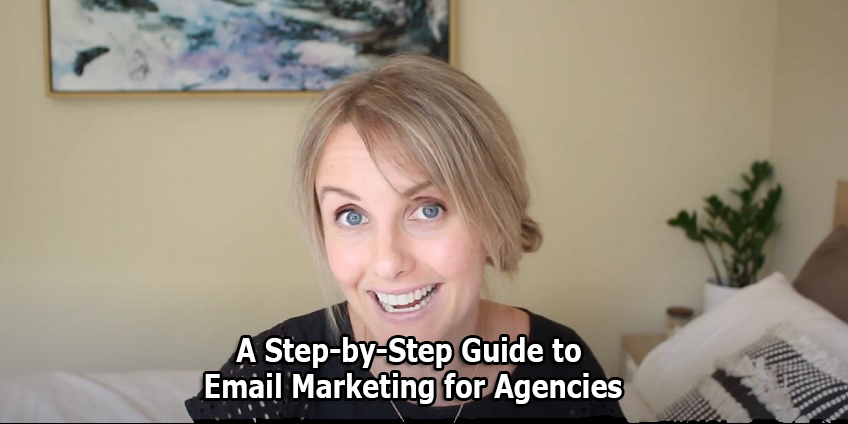Email Marketing for Agencies
When it comes to building recurring monthly income into their client invoices, email marketing presents enormous potential for agencies. Because email marketing is continuous and less project-based than other forms of marketing, customers employ agencies on a monthly basis.
As opposed to hiring agencies for a shorter amount of time to manage their email marketing, customers prefer a long-term relationship. Private labeling is one way that agencies can increase the amount of money they make from email marketing.
What exactly does the term “private label email marketing” mean?
The ability to personalize components of an external email service provider (like Campaign Monitor) with your company’s branding and logos is referred to as private label email marketing.
Because of this, advertising companies are now able to enjoy the advantages of a customized ESP. This, without having to invest the necessary time and resources into building one.
“Private labeling” and “white labeling” mean the same. But, as part of our attempts to be more precise, we have decided to use the word “private labeling” instead of “white labeling.”
Private label email marketing offers many benefits to agencies
Private labeling email marketing services for your customers has an obvious advantage. It helps ensure that your agency’s branding is prominently displayed in front of them at all times.
Because of this, your services have an air of sophistication and exclusivity. When opposed to the fragmented experience of utilizing many tools with their branding, each tool that you use with your customers seems like it has its own unique identity and is consistent throughout.
However, in addition to the sensation of exclusivity, there are also actual advantages. Let’s have a peek.
Every time a customer logs in, you should remind them how important you are
When it comes to offering email marketing services for their customers, the vast majority of agencies choose between one of these two models:
- Done-for-you. Your company takes care of everything, from the initial setup of the email service provider (ESP) through the monthly execution of email marketing strategy and automation.
- Just the set up. Your company will get your customers set up with their respective ESPs. And, you may also set them up with some automations and templates to get them started.
Your customers will require access to their ESP dashboard in order to monitor outcomes or make adjustments, regardless of which model your firm employs (or both of them). This implies that whenever they log in, they will either see your firm’s logo or the branding of a different company entirely.
Your customers will be continuously reminded of the value that you provide if you are able to private label the email marketing services that you provide. When customers go to monitor the status of their email marketing, they are confronted with your logo in the forefront, which serves as a potent reminder of the excellent job that you are doing for them.
Boost your business’s worth by providing branded email templates for your customers
It’s all about giving constant value for their bottom line if you want to keep customers around for the long haul. Strong visual branding is a proven method for increasing income, since consistent branding has been demonstrated to improve sales by 33%. This is one technique to earn more cash for your business.
Consequently, developing one-of-a-kind, branded email templates for each individual customer is an essential component of providing them with results month after month. Private labeling enables you to develop bespoke templates that include the branding of your customers (for every client). This makes it simple for either your firm or your clients themselves to rapidly produce emails that are consistent with their brand, and it makes it easy for them to do so.
Having all of your customers in one location can streamline your operations
Because private labeling allows you to handle several client sub-accounts under your main account, you only need to register an “email marketing – agencies” account to use it.
Your team will find it much simpler to keep the projects they are working on for their clients on track as a result of this. You may easily move between different customer accounts without having to log in and out of each one, and you can obtain an overview of all of your clients from an one location.
It is essential to reduce the load of administrative labor by using more efficient solutions in order to free up more time for billable tasks. According to the findings of a survey conducted by Sage, owners of small and medium-sized firms in the United Kingdom spend an average of 71 days per year on administrative work. If you spend an average of five hours each day on client work, this indicates that you are potentially losing up to 355 hours of billable time.
You may increase your profit margin by upselling ESP features
You are able to supply your customers with all of the capabilities that are included in an advanced ESP via the use of private labeling, saving you the expenditure of constructing your own. Included in the following are helpful features for your customers:
- Builders of templates that allow you to make attractive emails by dragging and dropping coding or design talents
- Planning for the customer journey in order to think on the most efficient email automations
- Individualization with the goal of boosting open and engagement rates
- Utilization of segmentation in order to provide highly targeted advertisements to the appropriate individuals
- A comprehensive analytics package to monitor and report on your outcomes.
Because of these characteristics, not only will your agency be able to enhance its outcomes and the level of pleasure it provides to customers, but it will also be able to mark up the price of the ESP and bill it directly to customers, which will result in an increase in your profit margins.
Considering that the average profit margin for a marketing firm is between 6 and 20 percent, expanding your margins is a chance to incorporate sustainability into your company.
Different kinds of email automations that you might make for your customers
After you have established your private label email marketing service, you are able to commence the process of developing branded automations for your customers.
Even though the demands of each client are unique, the vast majority of customers will need at least one automation of each of the following sorts. Let’s have a peek.
Welcome email automation
A welcome email automation is a series of emails that are delivered to new subscribers as soon as they join your list. These emails are sent as part of an automated process.
Confirming the subscription, extending a warm greeting to the new member of the list, and introducing them to the content that will follow are the primary goals of a welcome sequence. In addition, the findings indicate that consumers like to receive greeting emails: The open rate for welcome emails is a staggering 91.43%, which is over four times higher than the norm.
Be sure that your automation adheres to the following recommended practices in order to build an effective welcome email sequence:
- requests information from readers in order to facilitate segmentation at a later time.
- Encourages participation by posing questions and soliciting responses and sharing.
- Makes the reader feel like a unique individual by incorporating customization.
- Sends quickly, often within a week or so after signing up for the service.
Lead-nurturing email automation
According to research conducted by the CRO company Invesp, about 80 percent of new leads do not result in any sales. The automation of email communications geared at the nurturing of leads comes into play here.
Lead-nurturing email automations are email sequences that you send to individuals. People who indicated some interest in working with or purchasing from your client but are not yet ready. This might be because they are not quite ready to take the next step.
Individuals who have finished a sales call but have not purchased, people who have filled an interest form but have not moved on to the next step, and people who have viewed your website but have not made a purchase may all be considered leads.
A sequence that nurtures leads helps advance leads from the “I’m not sure” stage to the “Yes” stage. It’s possible that this is your final opportunity to seal the sale. We strongly suggest adhering to this 5-part email sequence designed to nurture leads:
- Value-add email – Give readers a brief qin
- Problem email: Demonstrate that you understand the challenges faced by your audience.
- Email about the solution; please explain how your firm might assist.
- Send an email with a case study and share the outcomes that you’ve received for previous clients or consumers.
- Email for sales — Explicitly request the purchase (possibly offering a discount)
Reminder email automation
Emails that are automatically delivered to readers as a reminder to complete a task are known as “reminder email automations.” Reminders to pay bills, transmit information, or attend meetings are all examples of common types of reminders.
Event reminder emails are a different kind of reminder email. The purpose of these emails is to remind attendees of an impending event. You may want to urge them to attend the event in greater numbers.
Your clients will reap the benefits of reminder emails. This will eliminate the need for them to manually keep their events and their clients or customers on track. Reminder emails may also guarantee that your customers always present a professional image. by providing their audiences with material that is timely and useful.
Sales email automation
A sales email automation, sometimes referred to as promotional email automation, is a series of emails that you send to subscribers. They encourages them to make a purchase of a product or service. The introduction of a brand new product, service, or program is often the primary emphasis of sales email automations.
Your customers will reap the benefits of sales email automations. They will having an increased level of excitement around the debut of a new product or service. This will eventually result in more sales.
Email marketing should play a significant role in your client’s marketing strategy whenever they are introducing something new. Research has shown that email marketing has conversion rates that are three times higher than those of social media. Also, it generates the highest return on investment (ROI) of any channel.
Improving your abilities as an email copywriter is essential. This specially true when you want to get the most out of the sales email automations you use. Let’s start with the following helpful hints:
- Make sure the subject line of your email is succinct and centered on the benefits.
- Make sure that your preview text is clickable.
- Compose body content that is simple to grasp and that discusses the offer in detail.
- Reiterate the guarantee made in your call-to-action button.
- Avoid spam-trigger terms like “free” or “purchase”
Re-engagement email automation
On the email list that you manage, it is unavoidable that some of the subscribers may become inactive. In other words, they quit opening their email. These sorts of subscribers have the potential to distort the results you obtain for customers. Thus, its critical to either remove them from the list or find a way to re-engage with them.
Campaigns aimed at re-engaging customers come into play at this point. A re-engagement email automation is a sequence of emails you send to inactive subscribers. The idea is to convince them to read emails again. This you do in an effort to increase email open rates.
According to the findings of our study, re-engagement email automations are most successful when their primary emphasis is not on making sales but rather on nurturing subscribers and increasing engagement (such as responses, opens, and clicks).
The following are some of the best practices that we recommend:
- Be honest with your subscribers. Explain to them exactly why you are calling them. As an example, ask them why they do not want to receive further emails?
- Give them a deal or a promotion in the hopes of drawing them back in.
- pass
Wrap Up
Private label email marketing is an immediate method that allows you to give value to your customers. You can incorporate sustainable income into your company model. You can also raise your profit margins, and reduces the amount of administrative work you need to do.
It’s a win-win situation for both of you. It enables you to provide your customers the high-end capabilities of a powerful email marketing service. While doing this you also maintain your own brand, saving you the time and money of developing your own ESP.



